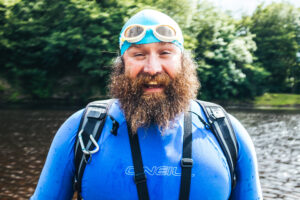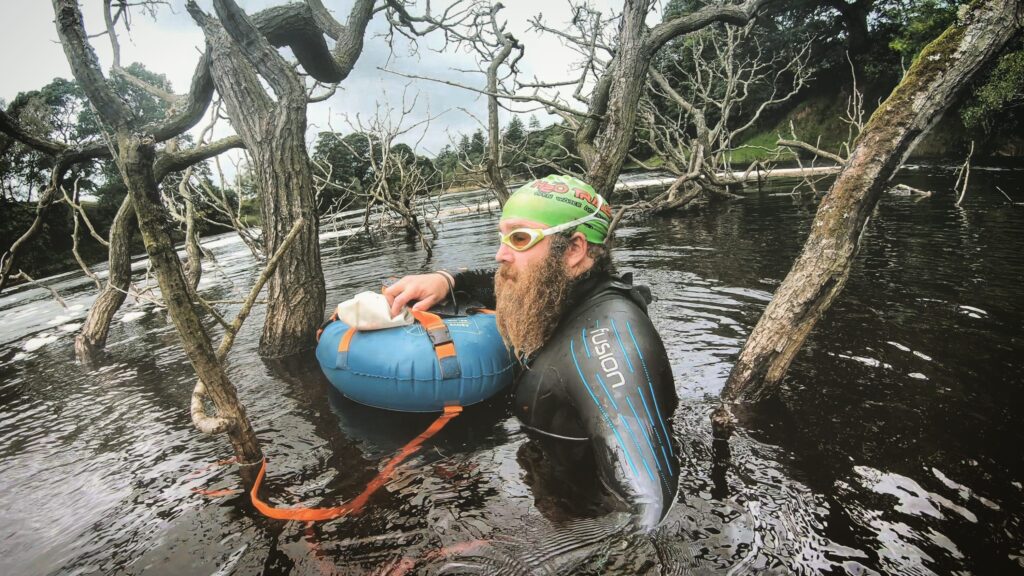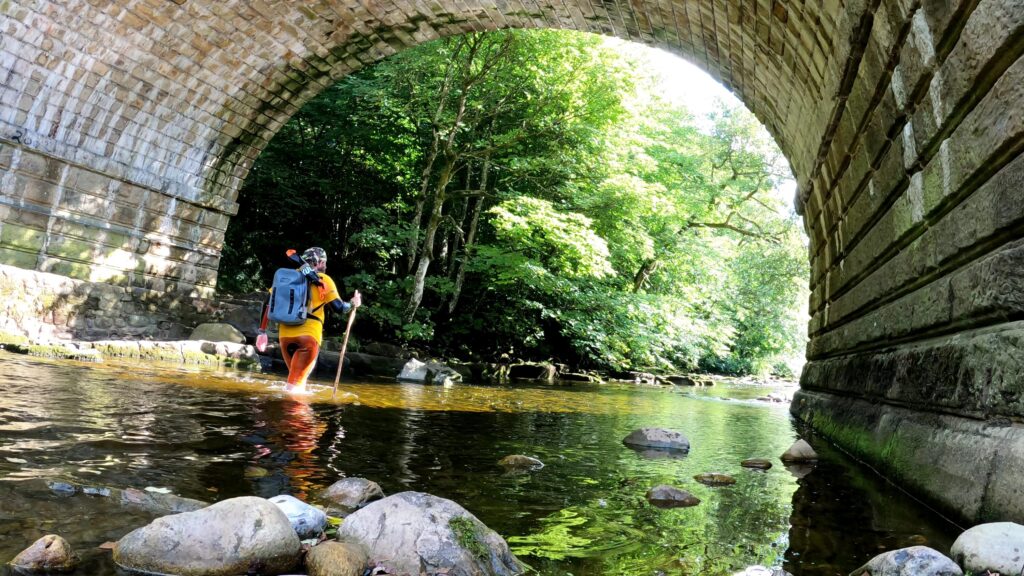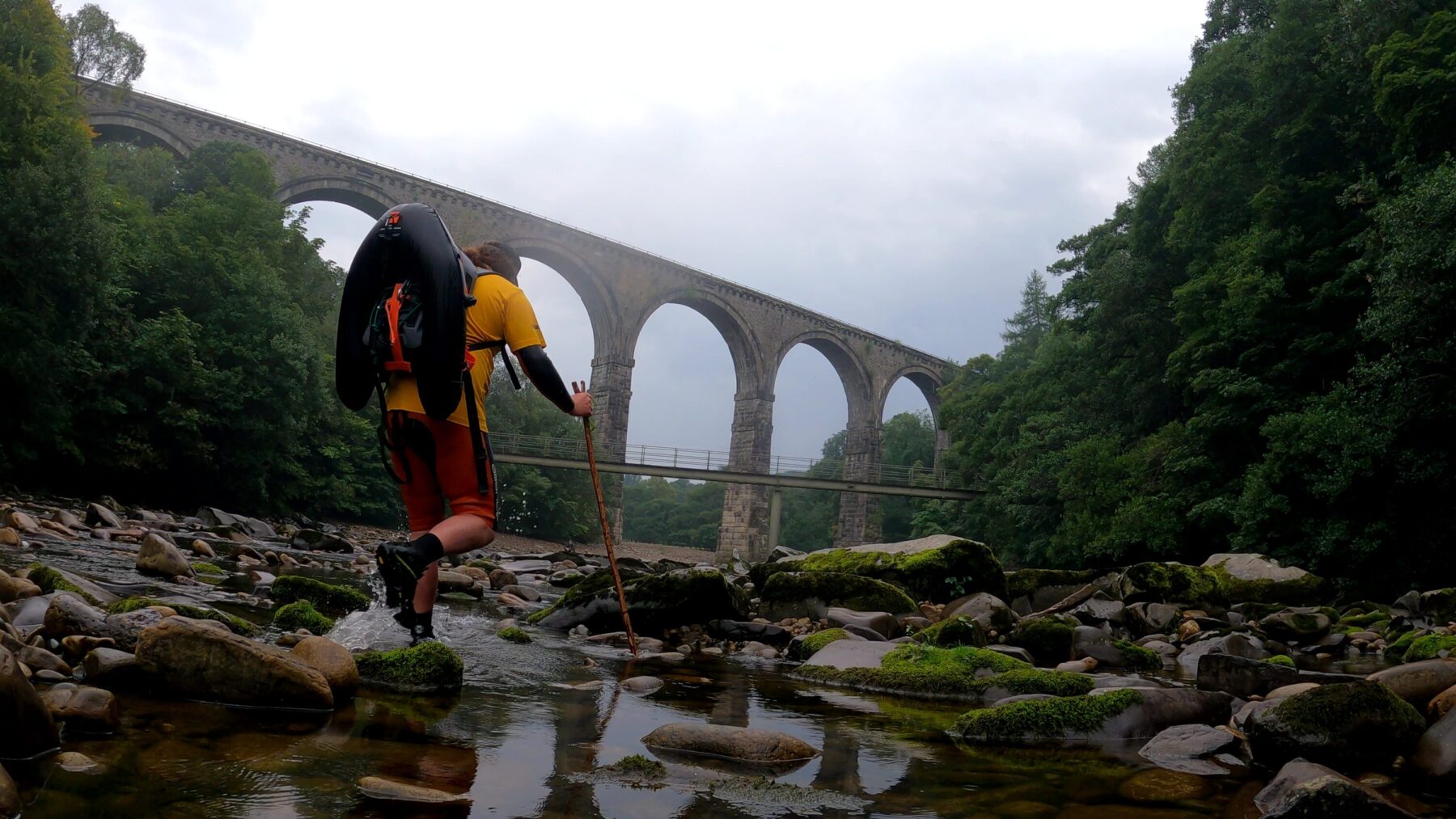
Tyne Traveller
Feature type Story
Read time 8 mins
Published Jun 02, 2022
Author Fenwick Ridley
Photographer Luke Douglas
For as long as he can remember, Fenwick Ridley has been a man of the water. Not in a big wave surfing, carrying boulders along the bottom of the ocean, paddling traditional wooden kayaks between Polynesian islands kind of way, this is something altogether different.
Fenwick has been a competitive swimmer for over 17 years and it’s in long distances, outdoors and in the cold where he really thrives. He soon found his way to ice swimming and has been trying to find his limits ever since. He has swum among icebergs in Hooker Glacier in New Zealand and covered 2km in 2 ̊C water just in his trunks. He’s been a swimming coach now for over 20 years, and in March 2022 he took home five gold medals in the Scottish Winter Swimming Championships.
In the waterways of his home county Northumberland though, he developed his own version of what’s popularly known as wild swimming. Taking on his home river, the Tyne, he fought his way against the river’s natural flow, walking, falling and swimming from sea to source and in the process coined the term river trekking. Below, he explores what it is about following a river course like this that is so attractive as he recounts some of his experiences on the Tyne.
This story first appeared in issue 07 of BASE magazine.
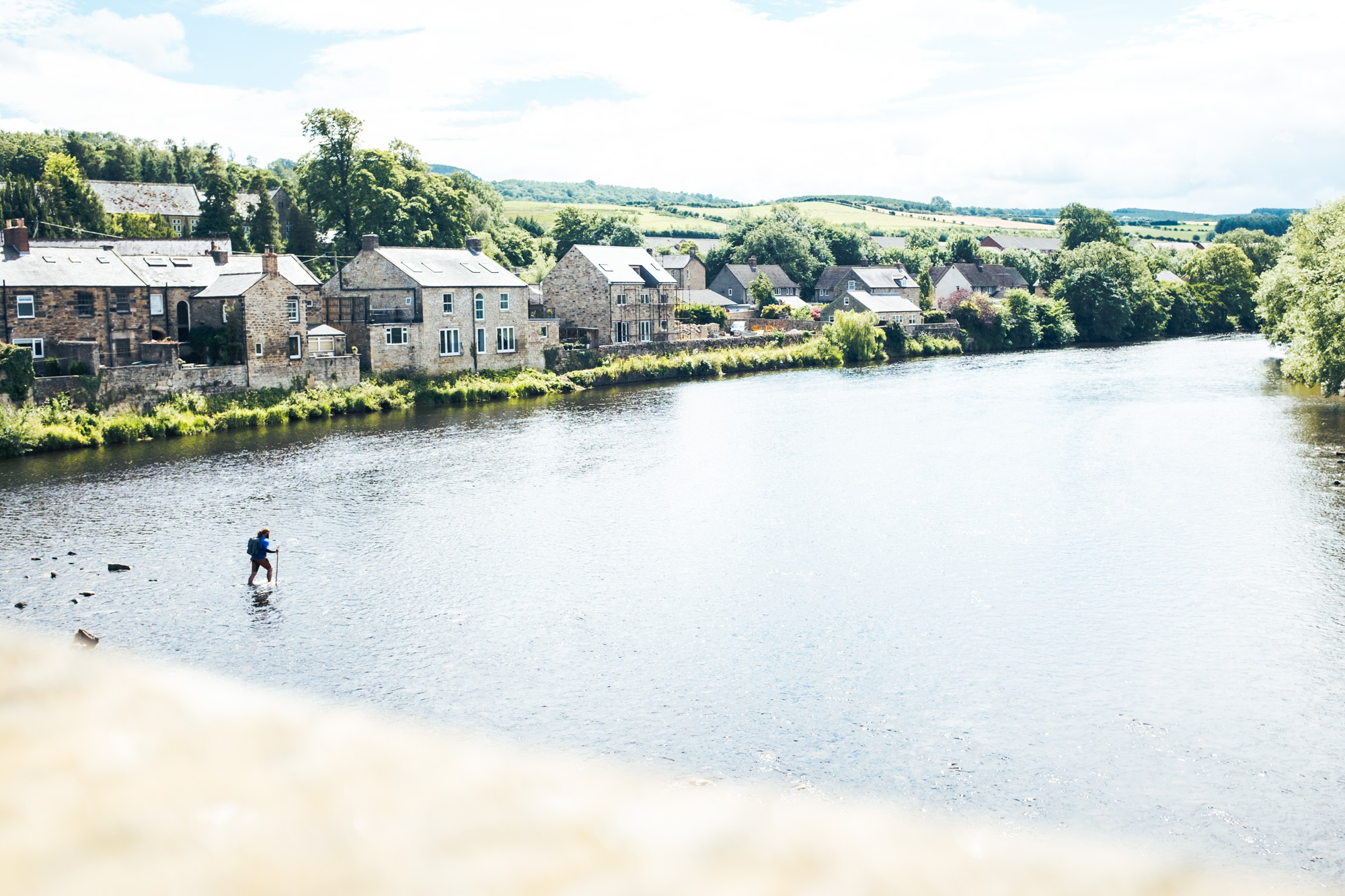
Against the flow, this is an up-river assault from sea-to-source, a test of endurance, grit and strength. A journey by any means necessary; swimming, walking and falling.
Legs wide, knees bent, I hook myself into the rocks, sand and mud of the river floor. Here, the river is narrow and shallow. The water rushes against my body and small waves form against my torso and a long wake trails behind me where my body interrupts the river’s natural flow. A tow-rope, stretched out ruler-straight, connects me to a small raft which flutters on the disturbed surface of the water. Completing my objective today seems unlikely, it’s taken me a couple of hours to move about 1000 metres along this challenging section.
I’ve spent the entire day on this river making my way from sea to source up the river Tyne and I’m exhausted. The sides of the river are thick with over-hanging bushes. Bailing here would mean wedging my body through the thick foliage, and fighting my way through the bushes and trees to the pasture behind. It wouldn’t be pretty. Leaning diagonally up river, I stand in an attempt to regain my strength. I’m exhausted, continuing feels like unnecessary torture. But up ahead of me, the river is stunning and I’m reminded of why I’m here in the first place. As I smash through the snacks in my pack, I’m overcome by this burst of joy and energy and it’s more than enough to spur me forward. Bring it on.
Against the flow, this is an up-river assault from sea-to-source, a test of endurance, grit and strength. A journey by any means necessary; swimming, walking and falling. Adventure Swimming was the name we first came up with for these kinds of journeys, but, considering the large obstacles I’d face and the brutal endurance it took to move against the flow, towing my raft behind me, it wasn’t enough.
That curiosity and spark for adventure runs through us all in different ways and to differing degrees. For me it’s something I could never put down.
I suppose I began river trekking at quite a young age, about 6 or 7 years old. I’d be standing in my wellies in the stream by my parents’ house gazing upstream thinking ‘I’d love to see up around the next bend’, so one day I set off to find out. With my little green wellies sloshing around the slippery stones, I wandered up and climbed carelessly on, not thinking for a second about the fact I was leaving my home far behind me. On my amble back with the echoes of my parents’ voices calling my name as they searched for me frantically, I realised I was in deep trouble.
Running around in the woods, building dens, tree houses and playing in the river was my normal. Today, I guess there’s no real difference. I’m bigger and there’s less boundaries but how I spend much of my time is exactly the same. At least now I’m stronger and with much better gear. My parents do still worry though.
That curiosity and spark for adventure runs through us all in different ways and to differing degrees. For me it’s something I could never put down. In my thirties, I put together what I call my Do List. This list isn’t a bucket list, it’s a list of mad, crazy, fun things to do, but in no way is it fantasy. These are 100% doable things that I absolutely intend on achieving.
I must admit, there are a few on the list which have me questioning how on Earth I’m going to make my way through it, but pushing boundaries is important.
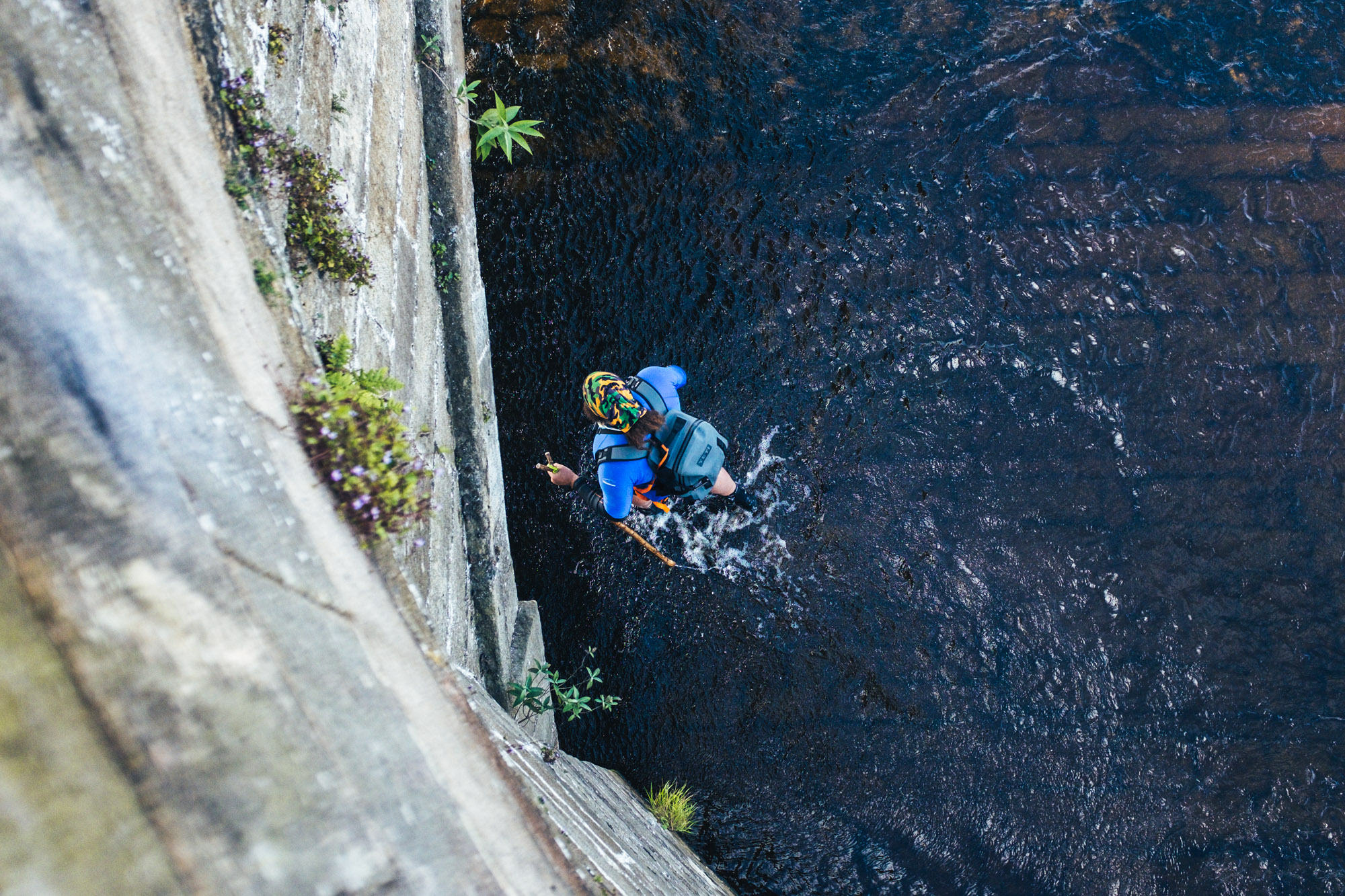
I had been thinking about doing a big river journey like this for a few years and it soon made its way to the Do List. The River Tyne was a perfect candidate because of its location. It’s near to where I live, which means I could finish a day on the river and then travel home. I also knew the river really well. I had grown up on it, paddling the whole stretch with my friend Keith, who I later lost to cancer.
This journey then would be a sentimental one, dedicated to a dear friend who I spent a lot of time on that river with. The Tyne therefore became where I’d start my river trekking missions, testing out the gear that would support such strain and punishment. I knew it was also going to get gradually harder as I progressed further up the river too, and I’d develop the conditioning to cope with it.
In recent years, trekking this river has created some incredible treasured moments with my dad following me, constantly checking in on the walkie-talkie. Sometimes he and my fiancé Jenny would just pop up in the most unlikely places to support and heckle me. Waving and smiling calling me a nut job or a crazy hairy fish.
When I was tackling the South Tyne, not very far down the river from my hometown, Hexham I remember seeing the main bridge that goes into town, towering high above the river. It was such a beautiful blue sky day, I couldn’t have asked for any better. I was feeling good, swimming up against the flow and I could see there was people on the bridge, in the distance watching my progress. I knew I was just about to finish and I could go and have a pizza or something and it just gave me this huge inner roar to keep going.
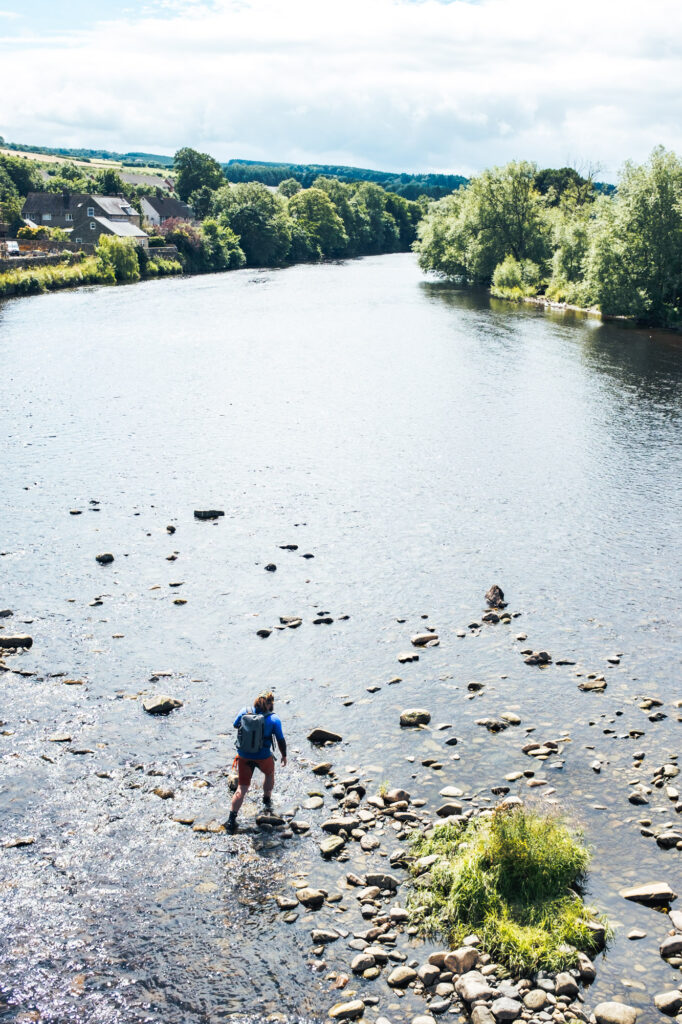
Bruises and twisted ankles are just a small part of the pain on the river and in faster sections, there is the very real danger of being swept down river from slipping and hitting larger rocks.
Before the reward though, first comes the payment. Bruises and twisted ankles are just a small part of the pain on the river and in faster sections, there is the very real danger of being swept down river from slipping and hitting larger rocks.
On one particular occasion I fell and had my raft wrapped around a tree in the water which was pretty scary. It was quite a thing to be in this unfortunate position, trapped by a log, the raft one side and myself the other. Part of my equipment is my knife which needs to be really accessible. It’s a really important part of my setup, especially when towing a raft. I was ready with the knife to cut myself free but thankfully, I managed to get loose before actually having to.
There is something quite unique about trekking through the water and swimming against its flow. It’s not a popular concept over here but something pretty similar is a traditional sport in Japan and some other Asian countries, and, in some ways it’s pretty similar to canyoning or gorge-walking.
River trekking provides a unique perspective of the countryside and a chance to look in areas of the river not many of us have actually seen. Quite often I’m stood there looking at a beautiful river flowing down with all this lovely countryside around me – perhaps inaccessible because of private land or the thick trees along the edge – and I realise that probably, no one else has ever stood in this spot.
As far as I know, no one else has trekked the entire length of this river at least hasn’t been digitally recorded, and that’s exciting to me. Many people have trekked the full length by land, that’s quite a popular thing, but not what I’ve done.
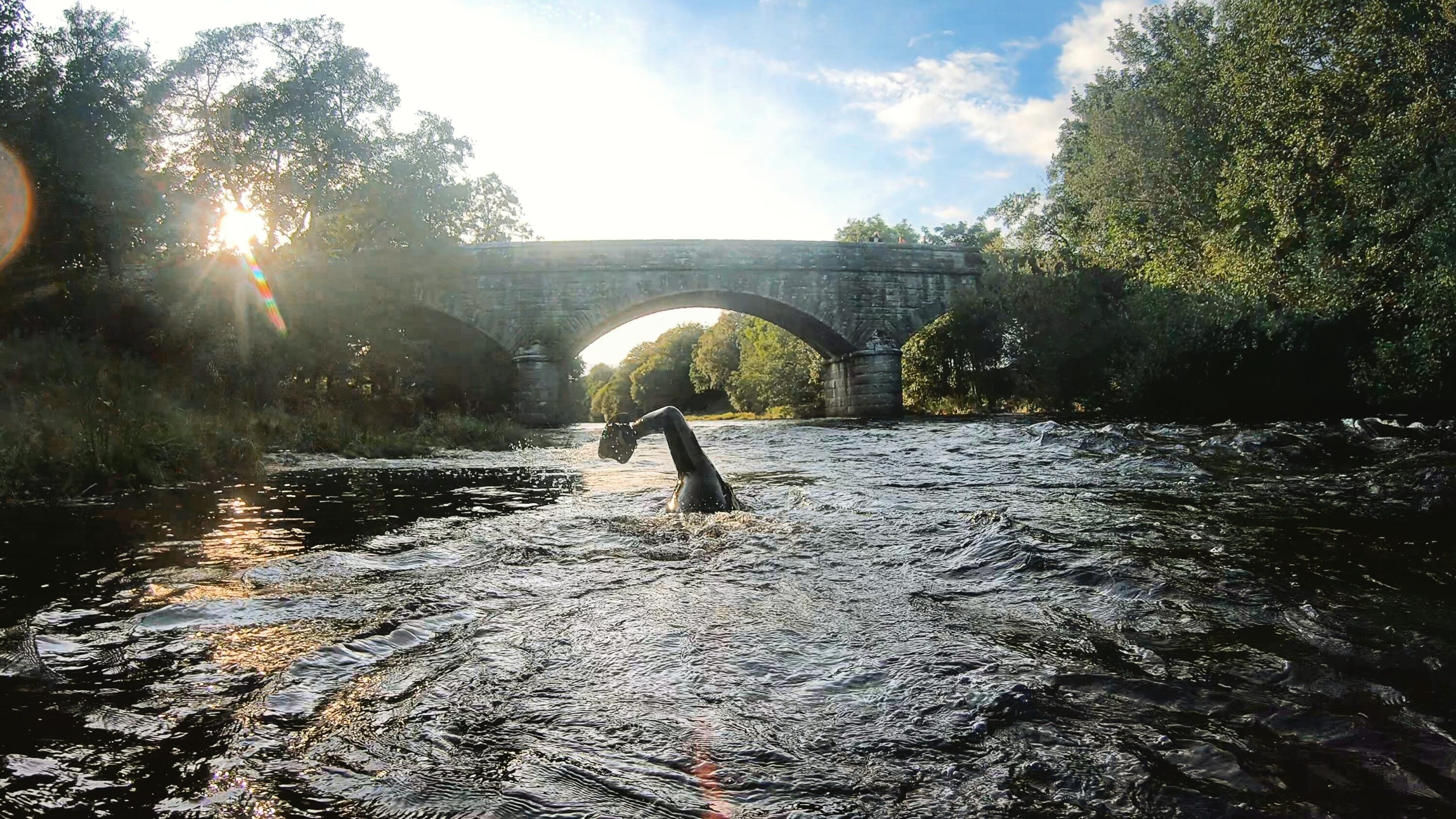
© Fenwick Ridley
It was super attractive to accomplish the whole North section, but the idea of doing the South too soon became even more so, and that feeling just escalated. To be able to say I had done not just one river, but two, to see what I had achieved knowing I could do more!
So far, I have completed 95% of The River Tyne, both North and South, and I’m hoping to finish the final section of the South in the next few weeks. Once I have completed all the main waterways in Northumberland, I’ll then move onto Cumbria. We are very lucky in this country, because we’re surrounded by waterways, by high volume rivers and beautiful little streams.
Journeys like this can be done on a very small scale and you could do what I did when I was younger, get the wellies on, get into a stream and have a really gentle jaunt upstream. It might only be a few hundred meters, but that’s river trekking!
For me, to get up through a section where the river is particularly strong, able to look back and say, ‘wow! I absolutely bossed that!’, That’s addictive. It’s been through these journeys that I’ve witnessed my own strength, to broadcast to myself what I’m capable of.
Don’t miss a single adventure
Sign up to our free newsletter and get a weekly BASE hit to your inbox
You might also like
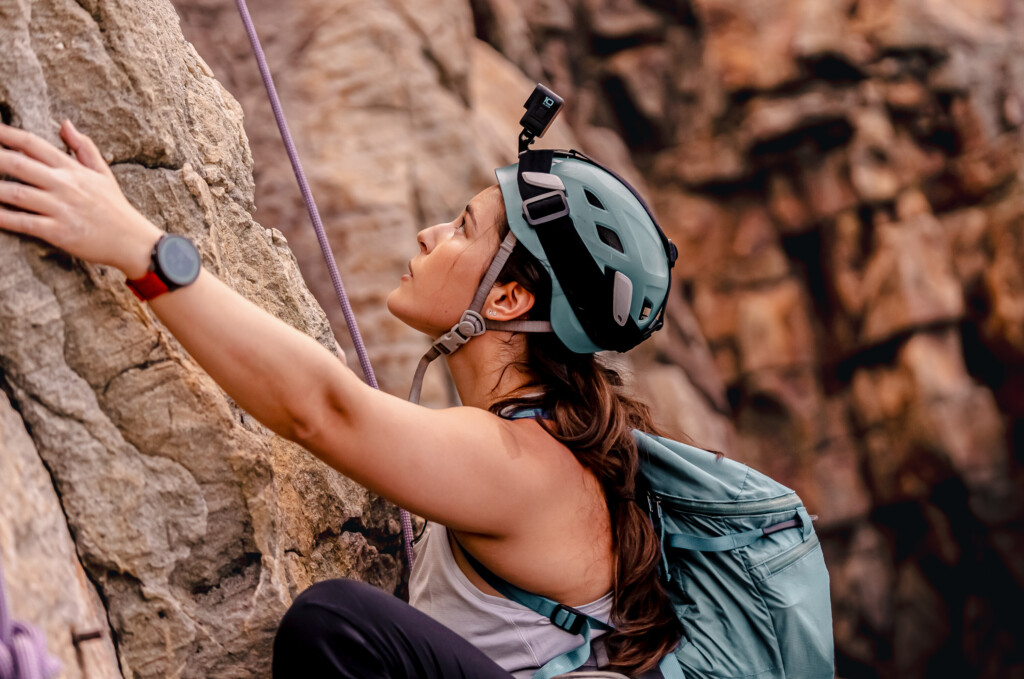
Photo Essay • BASE editorial team • Mar 18, 2024
Hunting happiness through adventure in Taiwan
BASE teams up with adventurer Sofia Jin to explore the best of Taiwan's underrated adventure scene.
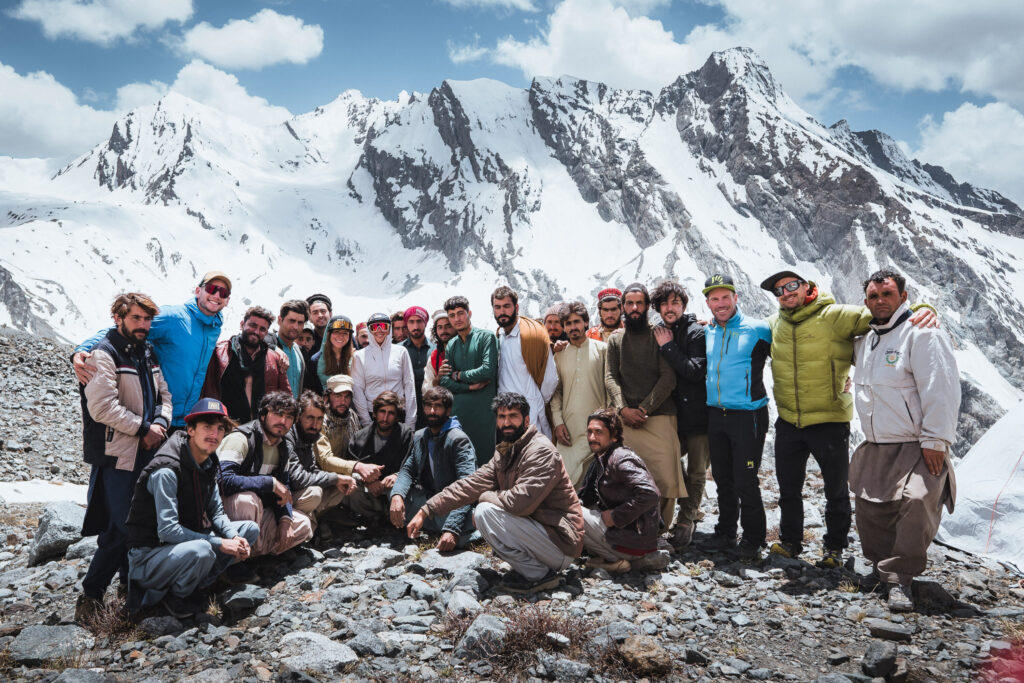
Story • Tom Grant • Feb 23, 2023
Swat Valley Ski School
An impromptu ski lesson during a ski-mountaineering expedition to make the first descent of Falak Sar in northern Pakistan
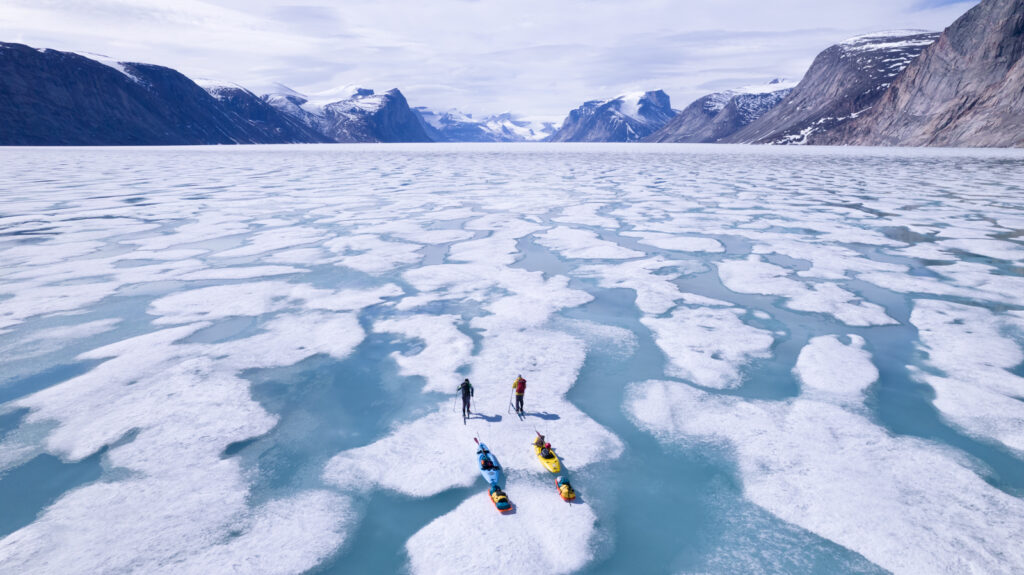
Interview • Rosie Fuller • Jan 18, 2023
Interview: A Baffin Vacation
Sarah McNair-Landry on her 45-day multi-sport expedition in the Arctic Circle
